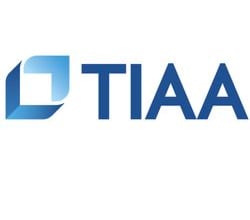This one comes up a lot, so I’m betting you’ve heard some version of this story already, or maybe it’s happened to you?
It starts simply—someone in “the business” has a problem, and they feel some sort of technology can help fix it. They google the problem, find a few vendors that sell tools to address said problem, then after going through a couple of demos, finding budget, and convincing leadership it’s worth it (you know the drill), the decision is made to pull the trigger and buy.
At some point, IT catches wind of this decision and is not pleased. “Why do you need to buy x software, when we already have A, B, and C that can solve the problem?” This is how the conversation started with one of our newest clients, a home health care organization with over 4,000 employees across the country.
In this post I’ll take you through their decision making process, and call out some important points along the way.
Company Background
The call I received was from an IT Director, Mark, and on that call I learned that they had an internal HR/ER team of about 6, plus additional HRBP’s spread across the country. He shared that the Director of HR (Judy) had been struggling with their current system (paper & excel!) for a while now, and her ability to effectively report on employee relations issues to the executive team was becoming increasingly limited.
Lots of very manual work created lag time and potential for error that eventually became unacceptable- and a preliminary budget was approved to find or build a solution.
Build or Buy Employee Relations Management Technology?
Mark was very open with his feelings- he initially felt it would make more sense to build a solution. He had an internal team of developers that were skilled in both web development and sharepoint, so why not use them?
A few things happened after Judy’s team saw the demo that changed his mind:
Faster Reporting
The HR team needed to be able to report and analyze data on the fly. Executive dashboards and reports that could be easily adjusted by the user were very important.
Guided Investigation Process
The idea of following a best in class “HR-first” process had tremendous value to the team. The loved the fact that they would be guided through an investigation with tips along the way to ensure consistency of process among the entire team.
Integrated User Interface / User Experience
It sounds basic, but they liked the way the system worked. “I’m in love” was the exact quote from the Director of HR.
Improved Exit Interviews
Adding this functionality wasn’t initially in scope, but when the team saw it and compared it against their manual process, they saw the value immediately.
In the end, Mark calculated that his team would need 160 hours to provide a “version 1” product. This didn’t include Exit Interviews, and would require that a full project team be formed to draw up requirements, conduct User Acceptance Testing (UAT), etc.
Key Take Aways
- Don’t ignore UI/UX. If users like a tool, they’ll use it. It’s that simple. Too often tools are thrust upon users that they didn’t ask for or don’t fit their needs, and they simply ignore them.
- Calculate your true TTV (Time to Value). When considering a new build, think through everything that will need to happen to get to version 1- then ask yourself “Does that timeframe work for the business, and will they be happy with V1?” If not, a SaaS solution may make more sense.
- Analytics are more important than ever. Any solution, weather built or bought, must have analytics built into its core. From tactical user reports to strategic executive dashboards, and everything in between. Progressive organizations are focused on “connecting the dots” around the employee experience, and that’s only possible if every single field is reportable.
The decision to build or buy is often complex and multi-layered, and for good reason. The results of this decision are likely to last years, so deserve careful consideration with key stakeholders at all levels.




